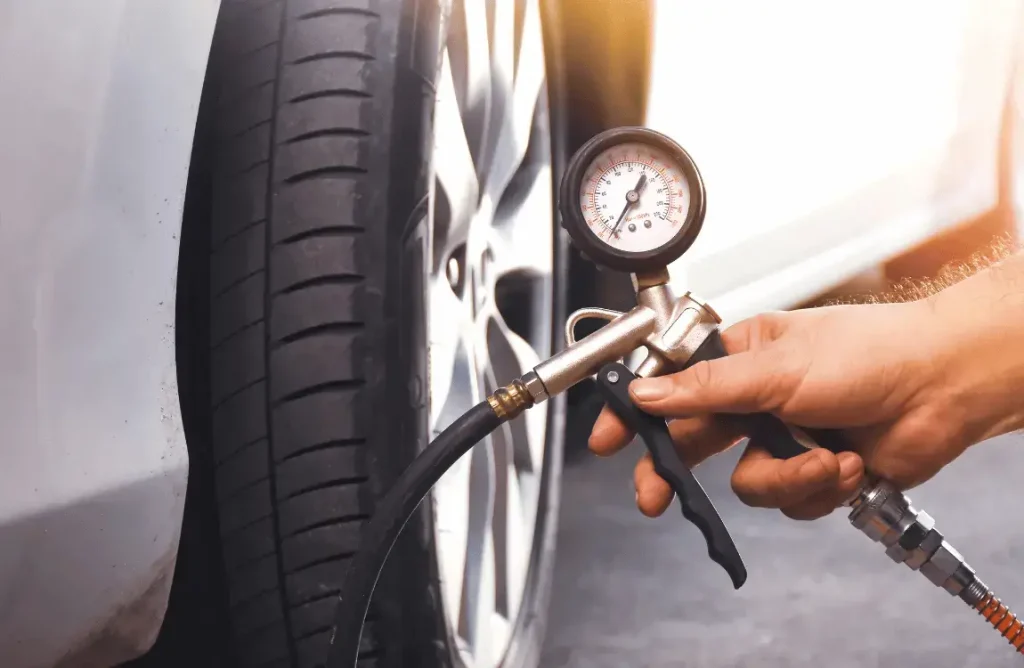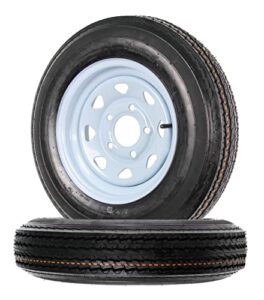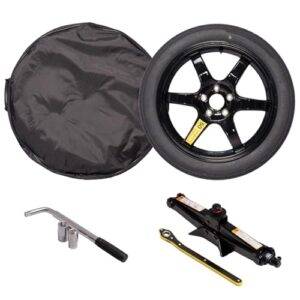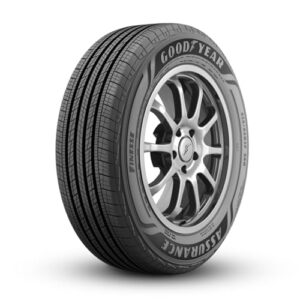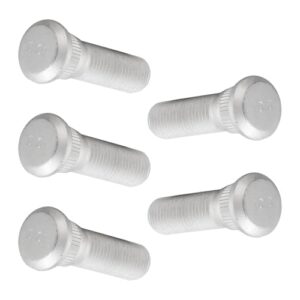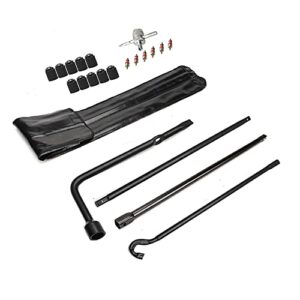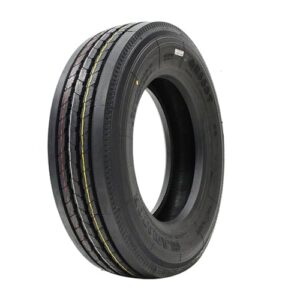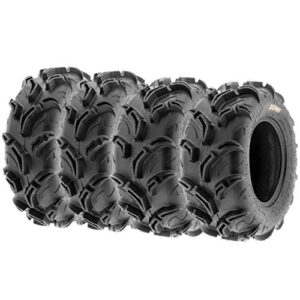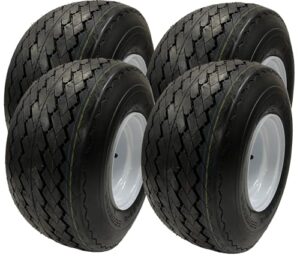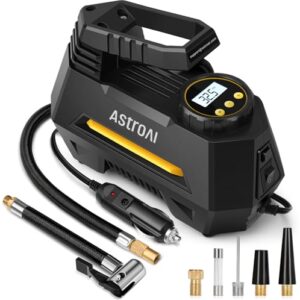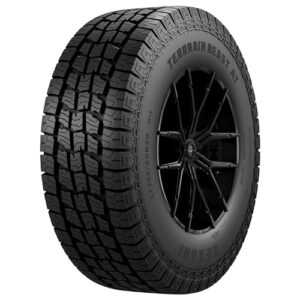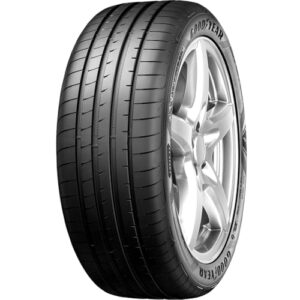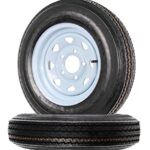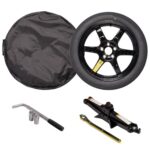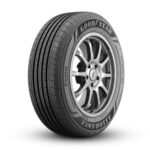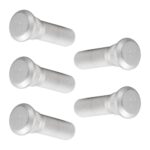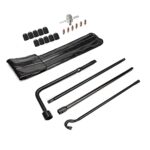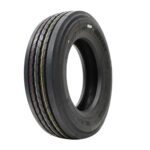To fill tires with air, first locate the tire’s valve stem and remove the cap, then attach an air hose to the stem and inflate the tire to the recommended pressure. Check the pressure with a gauge and replace the valve cap once done.
Ensuring your tires are properly inflated is crucial for safe driving, fuel efficiency, and prolonging tire life. Driving on under-inflated tires can lead to poor vehicle handling and increased wear, while over-inflation can make your ride less comfortable and increase the risk of a blowout.
Most vehicles have a sticker on the door jamb or fuel door that lists the ideal tire pressure. It’s best to check tire pressure when the tires are cold, as heat can cause the air inside to expand, giving a false reading. Many gas stations offer air pumps, and some new car models come with built-in tire inflation systems. Always have a reliable tire pressure gauge in your car to ensure accurate readings.
Quick Guide On How To Fill Tires With Air
Maintaining your vehicle’s tires is a key aspect of car care that should never be overlooked. Filling your tires with air ensures optimal performance, fuel efficiency, and safety on the road. This guide simplifies the process, taking you step-by-step through the essentials of tire inflation.
Importance Of Proper Tire Inflation
Keeping tires inflated to the manufacturer’s recommended pressure is crucial for several reasons:
- Enhanced Fuel Efficiency: Correctly inflated tires minimize rolling resistance, which can improve gas mileage.
- Better Handling: Handling and steering are more precise with properly inflated tires.
- Extended Tire Life: Proper inflation prevents uneven wear, extending the life of your tires.
- Reduced Risk of Tire Failures: Overinflation can lead to blowouts, while underinflation may cause tire damage.
Risks Of Overinflated Or Underinflated Tires
Awareness of the risks associated with improper tire pressure is vital:
| Condition | Risks |
|---|---|
| Overinflated Tires |
|
| Underinflated Tires |
|
Steps to Filling Your Tires With Air
Filling tires with air is a straightforward task that can be completed in just a few minutes. Follow these steps:
- Locate your nearest gas station with an air pump or purchase a portable air compressor.
- Check your tire’s optimal PSI (pounds per square inch) rating on the driver’s side doorjamb or in the owner’s manual.
- Remove the cap from the tire valve and attach the air hose from the pump.
- Fill the tire, periodically checking the pressure until the correct PSI is reached.
- Remember to replace the valve caps once you’ve finished.

Pre-inflation Checklist
Ensuring your tires are properly inflated is paramount for both safety and fuel efficiency. Before you add air to your tires, a thorough pre-inflation checklist can save time and help avoid potential complications. Follow these steps to make sure your tires are ready to hold the proper amount of air.
Locating The PSI Rating On Your Vehicle
The correct tire pressure for your vehicle is critical for safe driving. This information is often found inside the driver’s door jamb or in the owner’s manual. Look for a sticker or plaque listing the recommended PSI (pounds per square inch). Adhering to this specification ensures optimal tire performance and longevity.
Examining Tires For Damage Or Foreign Objects
Prior to inflation, a detailed inspection of the tires is necessary to spot any damage or debris that could cause air leakage or a blowout. Here’s a quick checklist to guide you through the examination process:
- Visible damage: Check for cuts, punctures, bulges, or irregular wear patterns.
- Foreign objects: Look for nails, screws, or stones that could be embedded in the tire.
- Tread depth: A simple penny test can help you gauge whether your tire tread is safe for driving.
Ensuring The Presence Of A Functional Air Gauge
A precise air gauge is required to measure tire pressure. Make sure you have a reliable and accurate tire pressure gauge at hand, whether it’s a digital, dial, or stick gauge. Consistently using the same type of gauge is recommended for maintaining accuracy in readings.
Efficient Air Filling Procedures
Proper tire inflation is crucial for safe driving and optimal vehicle performance. Ensuring your tires are adequately filled can improve gas mileage, reduce tire wear, and provide better vehicle handling. Before heading to a gas station or using your air compressor, familiarize yourself with efficient air-filling procedures. Knowing the correct steps can save time, enhance safety, and prolong the life of your tires.
Steps To Connect The Air Hose To Tire Valves
Connecting the air hose correctly to the tire valves is the first essential step in the air-filling process. Follow these detailed instructions:
- Park your vehicle near the air compressor, ensuring the hose can easily reach all tires.
- Turn off the engine and remove the key from the ignition for safety.
- Remove the cap from the tire valve and keep it in a secure place.
- Check the air compressor for a tire pressure gauge integrated into the hose.
- Press the air hose fitting onto the valve stem and secure the connection. You should hear air flowing if the connection is successful.
Filling The Tire And Checking Pressure Intermittently
When filling the tire, it is important to check the pressure intermittently to avoid over or underinflation:
- Activate the compressor to start the flow of air into the tire.
- Fill the tire in short bursts, checking the pressure gauge regularly.
- Aim for the recommended psi (pounds per square inch) as listed in your vehicle’s manual or on the sticker inside the driver’s side door.
- If the tire is overinflated, press the release valve on the hose gauge to let out some air.
- Once the desired pressure reading is achieved, disconnect the hose and replace the tire valve cap.
Adjusting For Temperature And Driving Conditions
Temperature and driving conditions significantly affect tire pressure. Consider these adjustments:
- During cold weather, pressure can drop, necessitating additional air. Conversely, warm weather can increase pressure.
- Heavy loads or long-distance trips may require higher tire pressure, as stated in your owner’s manual.
- Check tire pressure regularly, especially before long trips or carrying extra weight.
Air Filling Stations And Equipment
Maintaining the proper air pressure in your tires is essential for your vehicle’s performance and longevity. Convenient access to air-filling stations and understanding the varied equipment available can save you frustration and help ensure your tires are adequately inflated. Let’s explore where to find these stations and how to use the different types of air pumps.
Finding Air Stations And Understanding Different Equipment
Locating an air-filling station can be as simple as visiting your local gas station or auto repair shop. These are the most common places offering air services, often for free or for a small fee. However, equipment at air-filling stations can vary significantly.
| Type of Equipment | Description | Common Locations |
|---|---|---|
| Coin-Operated Air Pumps | Traditional air pumps are operated by coins. | Gas stations, car washes. |
| Digital Air Pumps | Modern air pumps allow users to set the desired pressure digitally. | Modern gas stations, and auto repair shops. |
How To Use Coin-operated And Digital Air Pumps
- Insert the correct amount of coins as indicated by the machine.
- Connect the air hose to your tire’s valve stem.
- Fill the tire to the recommended pressure, checking frequently with a gauge.
- Remove the hose once the correct pressure is achieved.
Digital air pumps simplify the process even further:
- Set the desired tire pressure on the digital interface.
- Attach the air hose to the tire’s valve stem.
- The pump will automatically stop when the tire reaches the set pressure.
Troubleshooting Common Air Filling Issues
Encountering difficulties while trying to fill your car tires with air can be a frustrating experience. Often, these issues require simple troubleshooting techniques that save time and avoid the headache of malfunctioning equipment or persistent tire woes. In this section, we’ll delve into the common snags you might encounter when inflating your tires and provide practical solutions to resolve these problems efficiently.
Dealing With Problematic Valve Stems
Valve stems are the unsung heroes of tire maintenance, serving as the gateway for air to enter your tire. Should you encounter difficulties with these, here’s what to do:
- Inspect the valve stem for visible damage or debris that might be causing an air leak.
- If dirt or small stones are clogging the stem, clean it with a valve stem tool or a simple cotton swab.
- Check the valve core with a core tool to ensure it’s not loose or damaged; replace if necessary.
- If leaks persist, consider replacing the entire valve stem.
What To Do If Tires Won’t Hold Air
Struggling with tires that deflate shortly after filling? The following steps might offer a resolution:
- Examine the tire for punctures, cuts, or any objects embedded in the tread.
- Perform a soap test: apply soapy water to the tire surface and watch for bubbling, which indicates a leak.
- Ensure that your tire bead is properly sealed against the wheel rim.
- If all else fails, consult a professional to check for internal damage or issues with the tire that are not visible externally.
How To Manage Air Pump Malfunctions
Air pump malfunctions can be a common obstacle, but managing them doesn’t require specialized expertise:
| Problem | Solution |
|---|---|
| The air pump doesn’t start | Check the power source and ensure the pump is plugged in or adequately charged |
| The pump starts but no air | Look for kinks or damage in the hose, and assess the connector for proper attachment to the valve stem |
| Incorrect pressure readings | Verify with a standalone tire gauge and calibrate the pump if necessary |
| The pump is noisy or vibrates excessively | This could suggest internal issues; if troubleshooting doesn’t help, consider replacing the pump |
If the problems with the air pump persist despite these checks, seek professional advice to prevent potential damage to your tires or the pump itself.
Finalizing Your Tire Air Fill
Now that you have taken the steps to fill your tires with air, it is crucial to finish the process correctly to ensure your safety and optimize your vehicle’s performance. The final stages are just as vital as the actual filling of your tires. These steps will guarantee that your tires are filled to the correct pressure, protected against the elements, and maintained effectively for future reliability.
Double-checking Psi On All Tires
Verifying the pressure in each tire after filling is crucial to your vehicle’s handling and fuel efficiency. Use a reliable tire gauge to measure and record the PSI (Pounds per Square Inch) for each tire, including your spare. This ensures that your tires are not underinflated, which can lead to increased tire wear and decreased fuel economy, or overinflated, which can reduce traction and increase the risk of tire burst.
Always compare the readings with the manufacturer’s recommended tire pressure, which is typically found on a sticker inside the driver’s door or in your vehicle’s manual. Make sure all tires have a consistent and appropriate PSI as per these specifications.
The Importance Of Tire Air Caps
Tire air caps might seem small, but they serve a larger purpose than most drivers realize. After checking and adjusting the tire pressure, resecure the air caps on each tire’s valve stem. These caps prevent dirt, moisture, and small debris from entering the valve and compromising the tire’s air integrity. Missing or damaged valve caps can lead to air leaks and potentially result in flat tires or blowouts, hence always ensure they are in good condition and tightly fitted.
Tips For Maintaining Consistent Tire Pressure
- Regularly check tire pressure at least once a month or before a long trip.
- Inspect tires for wear and tear or any visible damages that might affect pressure.
- Replace tires that frequently lose air and repair any detected punctures promptly.
- Be aware of temperature changes as they can affect tire pressure. Tires tend to lose or gain 1 PSI with every 10°F change in temperature.
- Drive smoothly since aggressive driving can affect tire pressure and overall tire health.
- Keep a portable tire inflator or air compressor in your vehicle for on-the-go adjustments.
By taking these preventative measures, you can avoid the inconvenience and safety hazards associated with improperly inflated tires. Regular tire maintenance not only extends the life of your tires but also contributes to better vehicle performance and gas mileage.
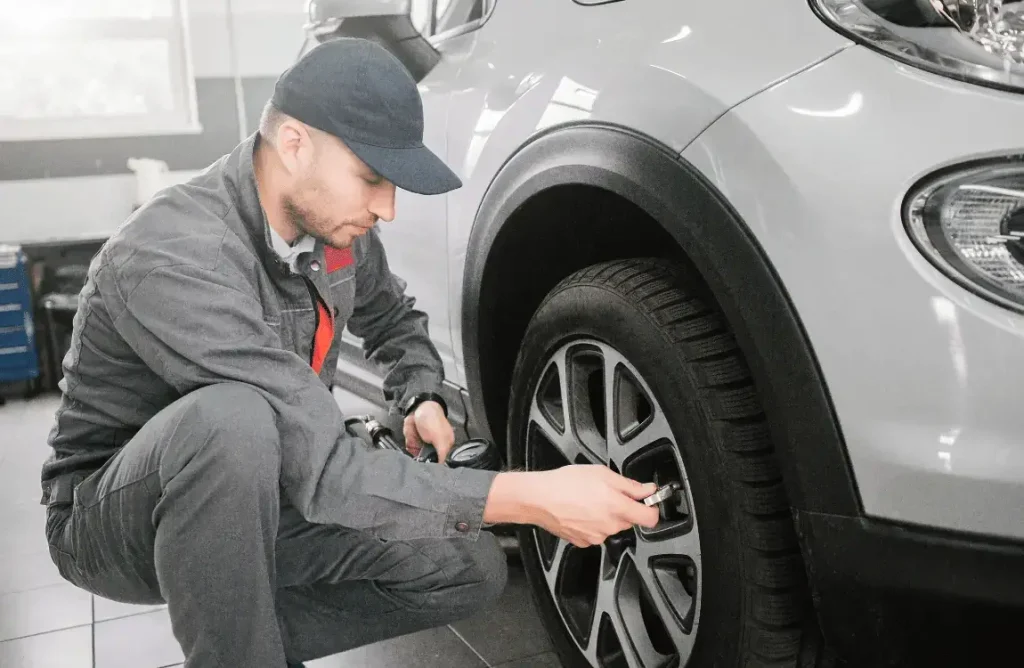
Frequently Asked Questions
What Pressure Should Tires Be Filled To?
Your vehicle’s recommended tire pressure is usually found on a sticker inside the driver’s door or in the owner’s manual. It’s measured in psi (pounds per square inch).
How To Check Tire Air Pressure At Home?
Use a tire pressure gauge to check the pressure when tires are cold, and ensure that it matches the psi recommended by the vehicle manufacturer.
Can I Over-inflate My Car Tires?
Over-inflating tires can lead to a harsh ride, uneven tire wear, and an increased risk of a blowout. Always stick to the recommended psi.
Conclusion
Keeping your tires properly inflated ensures optimal performance and safety on the road. Remember, routine checks can save you from potential hazards and improve fuel efficiency. Embrace these simple steps to maintain tire pressure and enjoy smoother, safer travels. Keep rolling confidently with air-filled tires!


